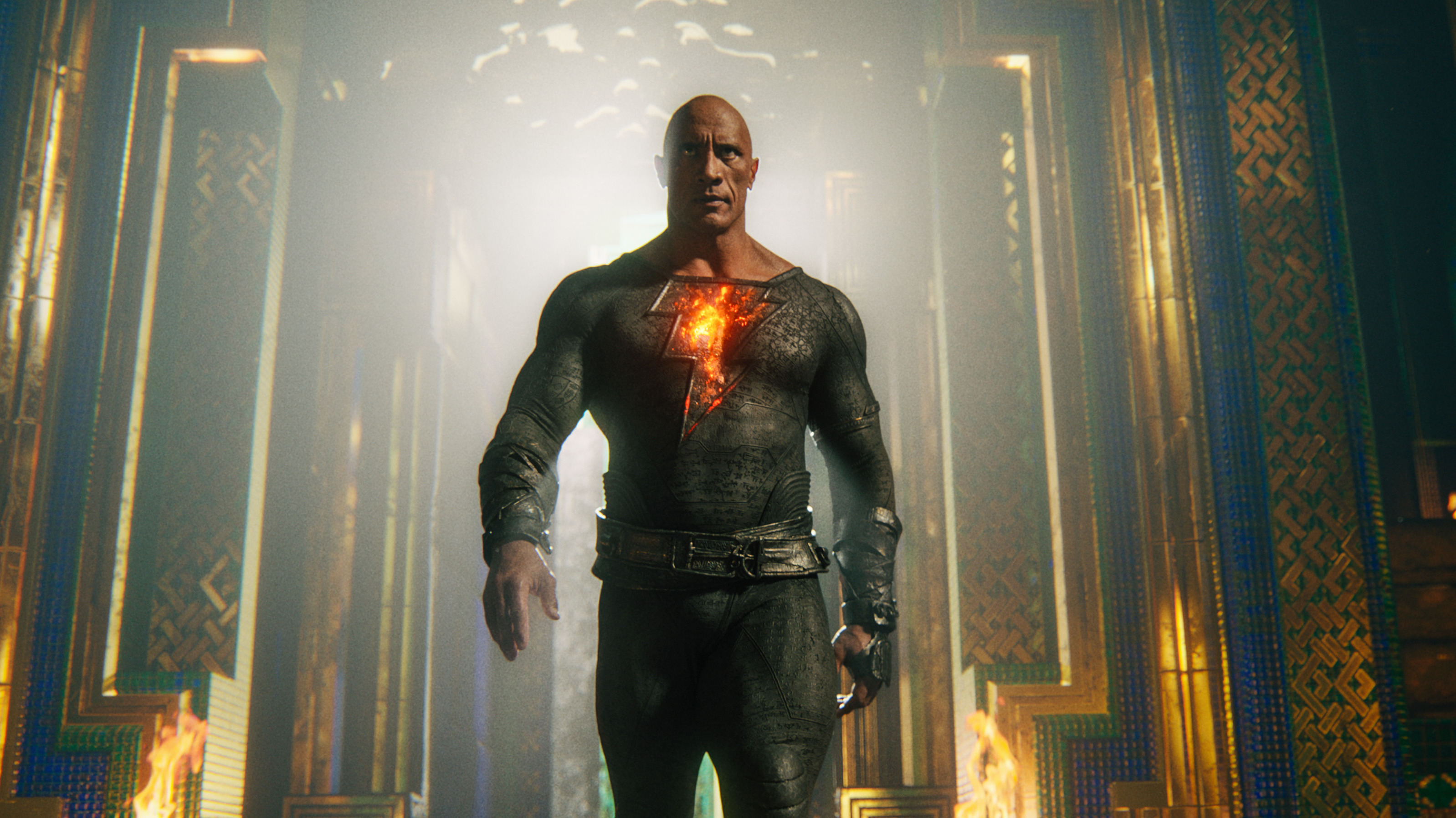Black Adam throws out hints to Iraq’s Sumerian past, but won’t ever fully embrace it, much to its detriment. (Warner Bros.)
Black Adam. What a bad movie.
Don’t believe the promoted tweets that claim Dwayne Johnson is delivering a “nuanced” performance–Black Adam is a terrible film and Johnson’s acting fulfills his nickname of “The Rock.” It’s a dull film, even with the amount of blasts and fights and destruction present. The film also does a piss-poor job of showcasing Middle Eastern culture and imperialism in a way that’s informative, engaging, or even entertaining.
Here’s where the film went wrong.
The film doesn’t care about Kahndaq–its central setting.
Black Adam is set in the fictional Middle Eastern country of Kahndaq, a country that seems like a cross between Iraq and Egypt. The film wants the audience to be immersed in the world of Kahndaq, but the film could care less about the culture it’s trying to create or emulate. Even when it comes down to the accents, every actor playing a Kahndaqian has an accent except for Johnson, who sounds like himself–an American–even though his character Teth-Adam is over 5,000 years old.
The lack of focus on Khandaqian culture and worldbuilding leaves the film feeling empty, even though, if we’re going by the cuneiform-style writing shown on Khandaqian artifacts, there’s a ton of real-world culture the film could draw from since cuneiform originated in ancient Sumer, located in modern-day Iraq.
With Khandaq being reduced to one city center, it feels more like a town rather than an entire country. Even worse, that townscape looks like nearly every other representation of the Middle East and North Africa (MENA) in American film and television.
Moon Knight executive producer Mohammad Diab talked about his hatred of American portrayals of MENA nations, calling it “orientalism.”
“It dehumanizes us,” he said, according to Comic Book Movie. “We are always naked, we are always sexy, we are always bad, we are always over the top. You never see Cairo. You always see Jordan shot for Cairo, Morocco shot for Cairo, sometimes Spain shot for Cairo. This really angers us.”
” I remember seeing Wonder Woman 1984 and there was a big sequence in Egypt and it was a disgrace for us. You had a sheik – that doesn’t make any sense to us. Egypt looked like a country from the Middle Ages. It looked like the desert,” he continued.
The horrible optics of MENA representation in the West
His frustration isn’t anything new to avid movie fans. Back in 2016, I wrote about how Star Wars film Rogue One: A Star Wars Story brought MENA tropes to space, including the dusty yellow filter, primitive portrayals of MENA spaces as only being outdoor markets, a lack of car traffic, and people mystified by Westerners traveling through. Black Adam doubles down on several of these tropes, especially with the entire film shot in an unrelenting, dusty yellow or desaturated haze. Just take a look at how the film alternates from its “MENA” filter to its “Western” filter depending on the location:




You can also see how the Kahndaqian characters are all dressed as if the 1980s, bringing to mind the era of Indiana Jones’ popularity. Characters drive old cars (including the film’s main vehicle, a van with a tape deck), or have old hairstyles, or are doing out-of-date things (like skateboarding in a way that reminds you more of 1990s “radical” culture rather than the X Games).
Even more damning, look at how Cairo, Egypt is portrayed under Diab’s watch on Moon Knight. You see bright colors, contemporary clothes and cars, sophistication–everything you don’t see in Western portrayals of the area. (More pictures found at MCU Location Scout.)




To add even more insult to injury, let’s look at how modern-day Iraq looks. Note that it’s completely different from how Kahndaq is portrayed in Black Adam.
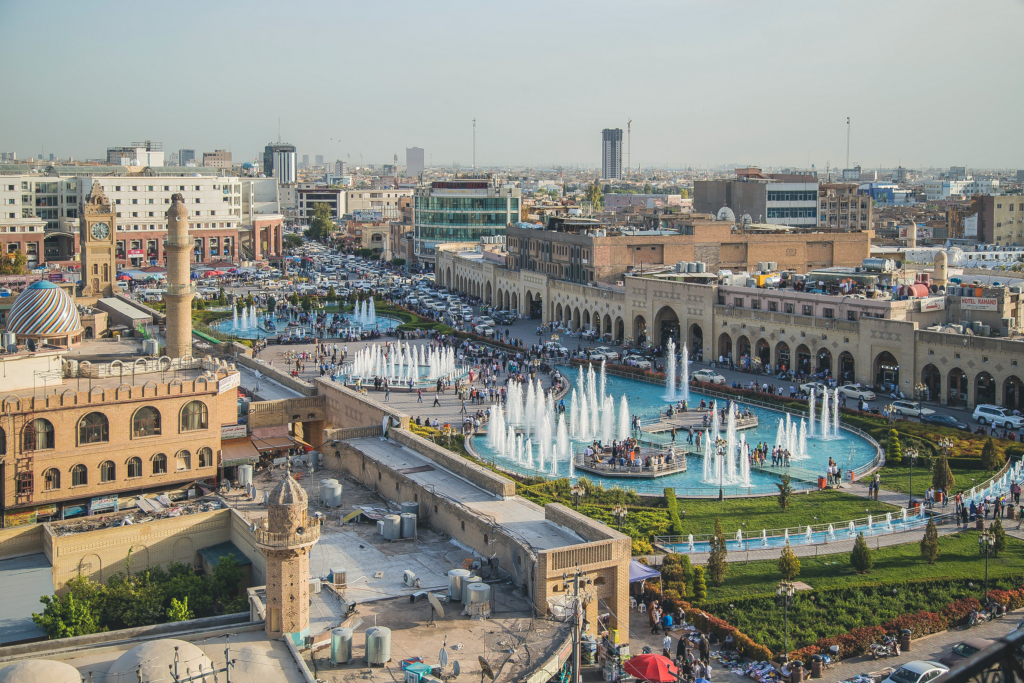
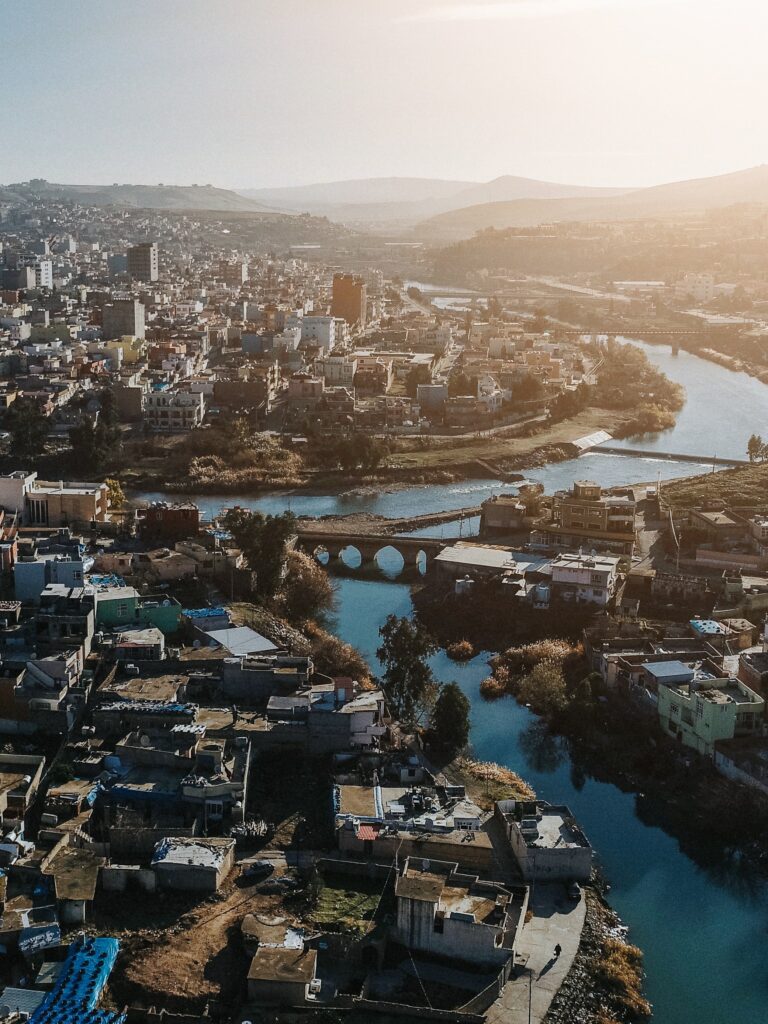

When the film does try to inject some commentary or authenticity, it’s done in a laughable way. Female lead character Adrianna Tomaz (Sarah Shahi) rightly tells the Justice Society that they haven’t shown up at all to help Kahndaq, who has been terrorized by outside entities, until the country’s champion shows up. This is the strongest element of the film. But because of the film’s lack of interest in worldbuilding, we don’t know why outside forces want the region’s resources so much, what impact they have on the wider world, and why other forces within Kahndaq haven’t revolted before Teth-Adam’s arrival. Throughout most of the film, the portrayal of Kahndaqians has been as victims, waiting on one man to show up.
The amount of destruction done to the country also undercuts any message the Justice Society might have. Even though they claim they are trying to save the area from Teth-Adam, they literally destroy priceless artifacts, not to mention almost every building in the city center. Teth-Adam isn’t any better, since he (and Hawkman, played by Aldis Hodge) destroy Isis’ home for no reason other than for audience laughs or for fighting set pieces. In other words, Kahndaq doesn’t matter as it’s own entity–it only matters because of its relation to Teth-Adam.
Poor worldbuilding, when ancient Sumer is right there
Most of the worldbuilding that happens in the film comes from flashbacks and archaeological objects. But again, the sparse worldbuilding doesn’t immerse. Ancient Kahndaq is still portrayed with that same dusty filter, the same feeling of victimization.
Sadly, there were glimmers of hope for what the movie could have been. No character in the flashback scenes wear colorful clothing–everything is, for some reason, beige or cream even though people in ancient times wore tons of color, as shown in this illustration of ancient Sumer.
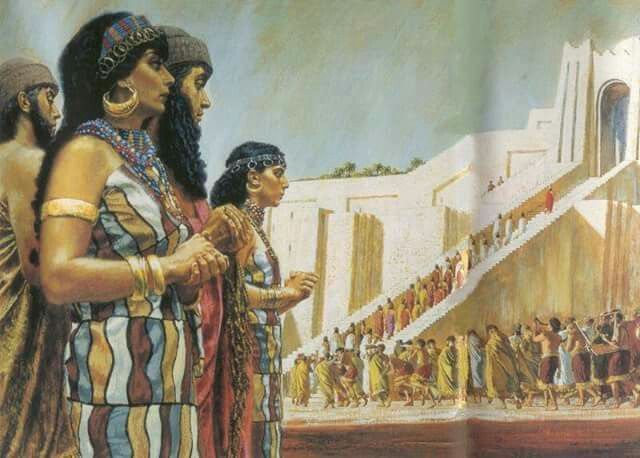
The architecture, such as the ziggurat-like structure where the king resided in the film, also reads “ancient Sumerian,” but again, the architecture would have had some type of color, if not the outside, then at least on the inside. Sources state that the very top of ziggurats, the temple, would have been painted indigo blue. And, like all ancient cultures, ancient Sumerian sculpture included color inlays. As Art in Context writes, Sumerian pieces had “decorative elements made from semi-precious stones like alabaster, lapis lazuli, and serpentine” and also used metals including “silver, gold, bronze and copper as inlays and designs on various objects.”
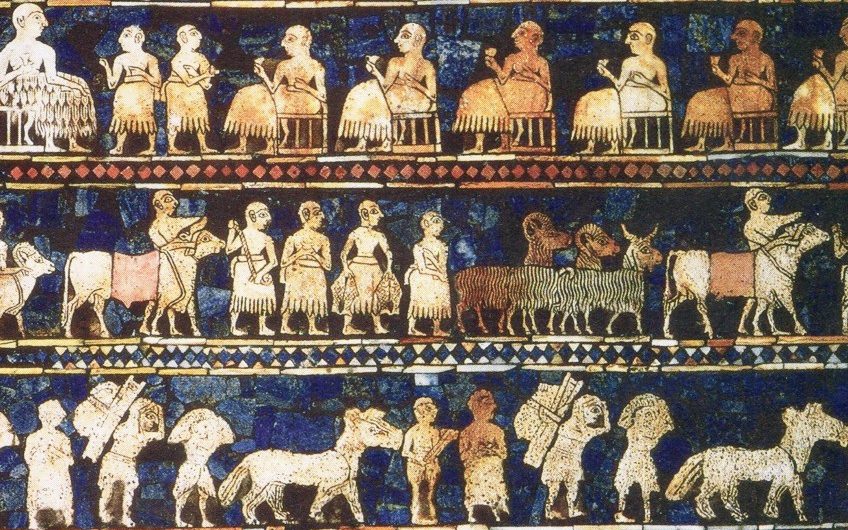
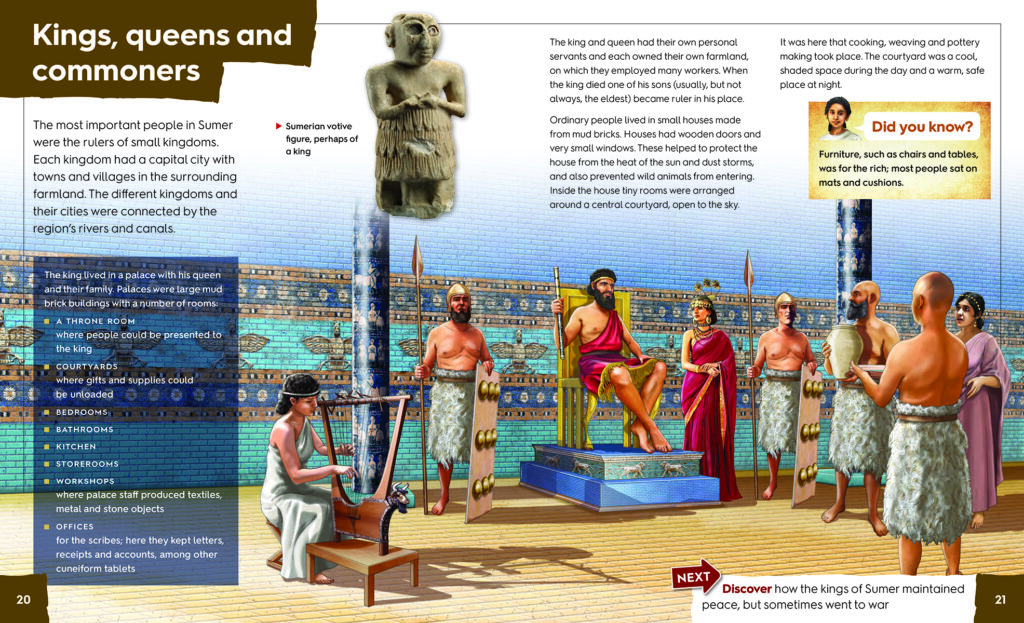
I will give the filmmaking team this kudos for actually showcasing walls inside the ziggurat as being inlaid with what looks like lapis lazuli and gold, as seen below:
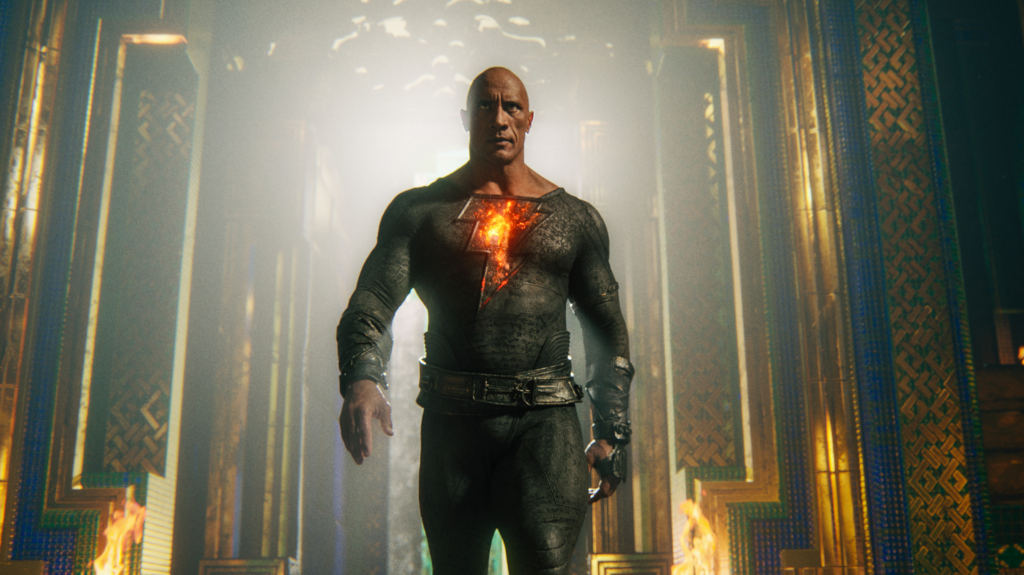
But one hallway isn’t enough. If the filmmaking team were truly interested, we could have gotten more of a sense of Kahndaq culture since ancient Sumer was a highly advanced civilization. Cuneiform, for instance, is the oldest recorded language in the world, appearing around 3100 B.C., according to archeological records (as reported by History.com). The Epic of Gilgamesh, still taught in schools today, is the oldest epic poem on Earth, even older than the Bible.
The civilization also made great strides in science, engineering, math, architecture and more, including developing the modern system for keeping time–60 seconds to a minute, 60 minutes to an hour, etc. Sumerian music has also influenced the world, with “Hurrian Hymn No. 6” as the oldest musically notated song in the world.
Missed opportunities for the sake of ego
Black Adam could have used this film as a moment to truly embrace MENA heritage, similar to how Black Panther uses a fictional African nation to highlight and honor real-world African cultures. But instead, worldbuilding and character building came second to showcasing Johnson’s star power in the most vain light possible. As a character, Black Adam is only as engaging as the world surrounding him–seeing the strongest man in the world destroy stuff and act stoically is boring if there’s nothing there to provide context to that character.
For as expensive as it was to create this film, it certainly could have done much more to not feel so cheap, in more ways than one.
